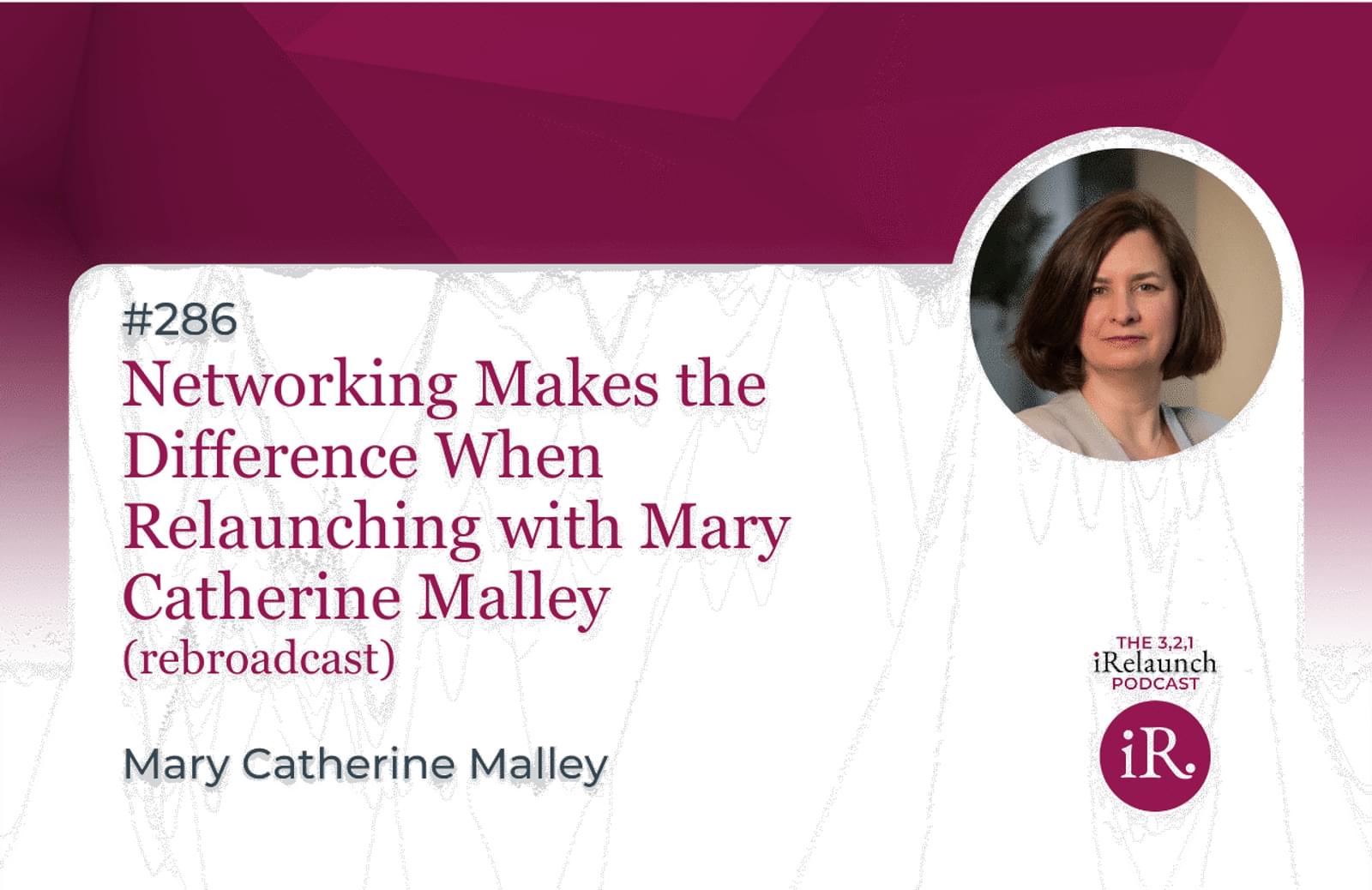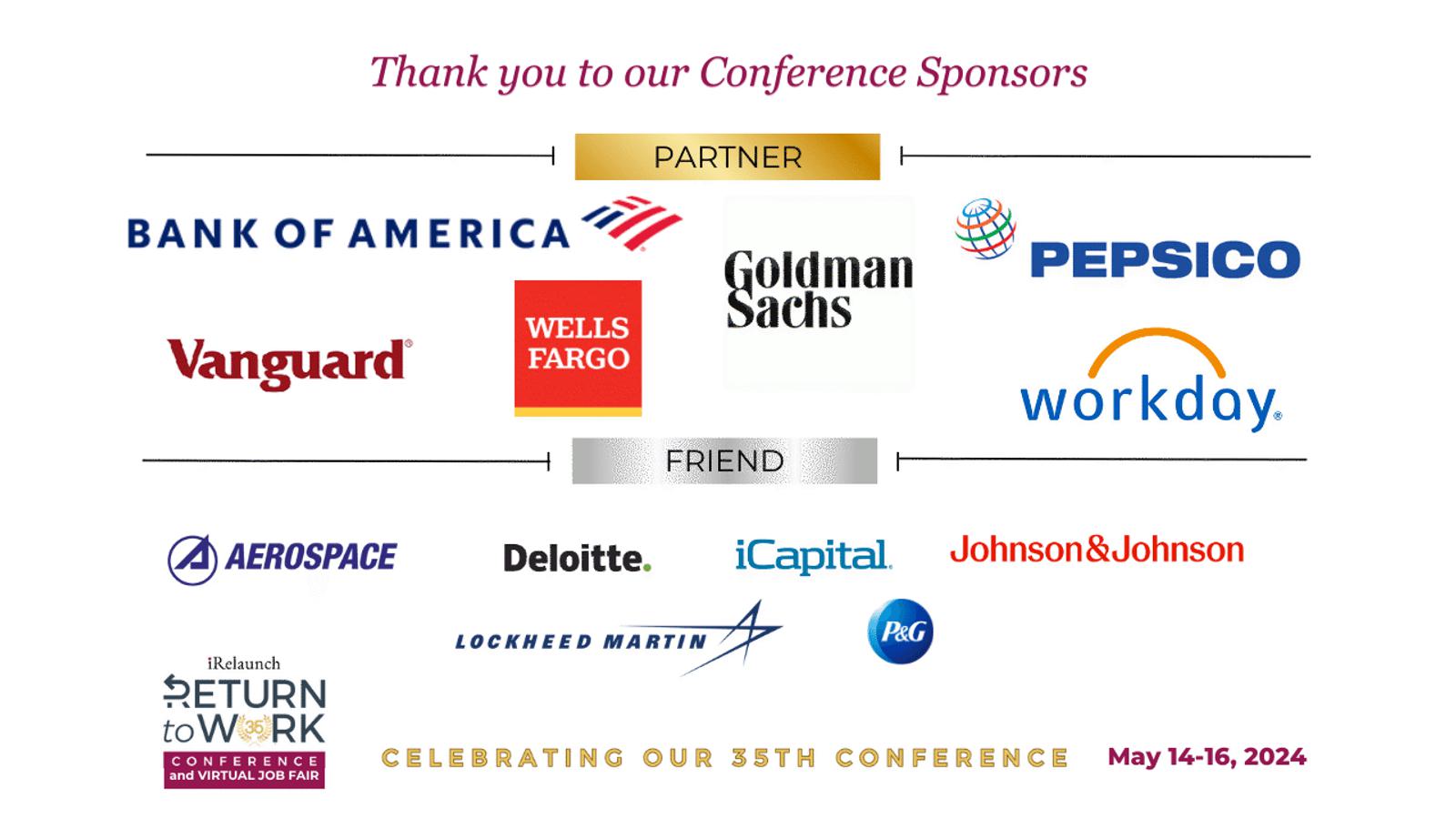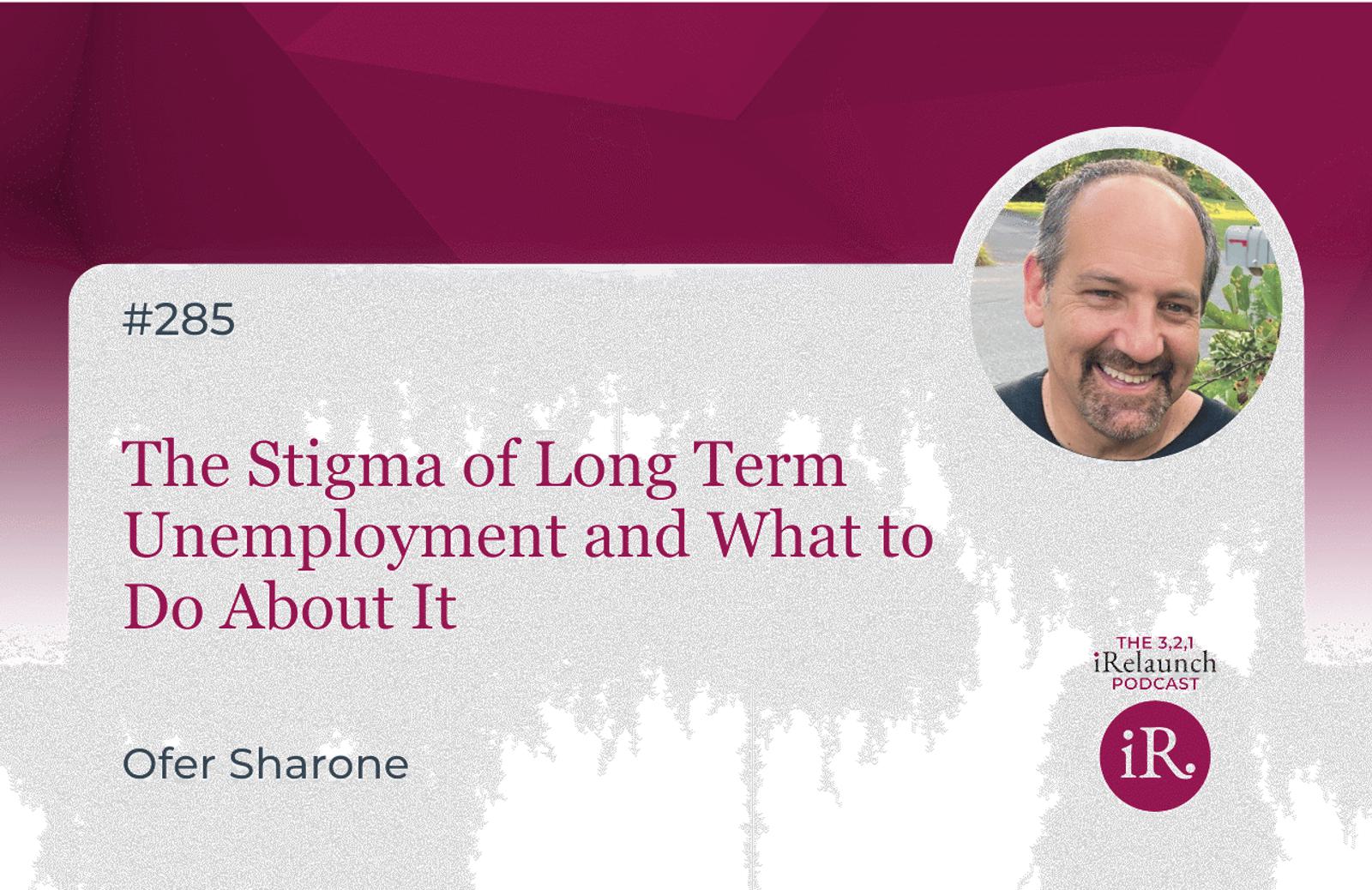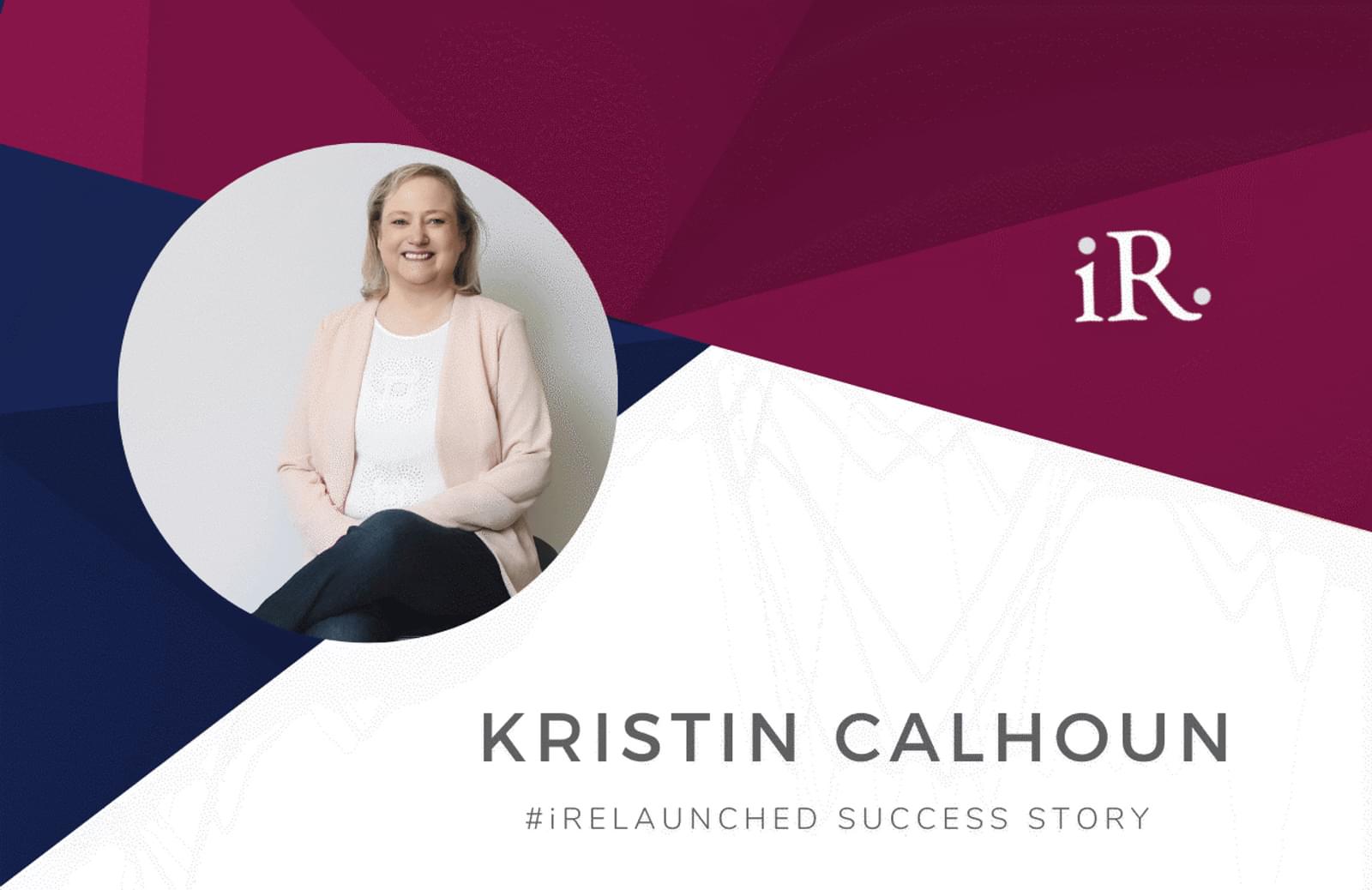
EP 228: Milestone: LinkedIn’s New Profile Feature for Career Breaks, Special Edition with Bef Ayenew

Episode Description
Bef Ayenew is Director of Engineering at LinkedIn where he leads the Search and Profile engineering teams focused on helping LinkedIn members express their professional identity. In this special edition of our podcast, Bef announces the launching of the significant, new LinkedIn profile feature that is particularly relevant to relaunchers, the career break designation. Now, a career break can be presented as an integral part of members’ profiles, as any job listing would, with opportunities to explain and list pertinent efforts during that time. Listen in as Bef explains the background, evolution and impact of this brand new profile feature, and how best to utilize it.
Read Transcript
Carol Fishman Cohen: Welcome to 3, 2, 1 iRelaunch, the podcast where we discuss return to work strategies, advice, and success stories. I'm Carol Fishman Cohen, CEO and Co-founder of iRelaunch and your host. Today, we bring you a special edition of our podcast that we are very excited about. Last night, LinkedIn announced a significant new feature that is particularly relevant to relaunchers.
Today, we are speaking with Bef Ayenew, the engineering lead for the LinkedIn profile page about this announcement which he will reveal shortly. We have always talked about LinkedIn as a gift to relaunchers because the platform gives us a low key way to identify and get in touch with all of those long lost people from the past.
Then in late March 2021, LinkedIn announced that "Stay at Home Parent" leave designations had been added as an official category for LinkedIn profile building. Because of LinkedIn's outsize role as the arbiter of career paths and profile building, in our minds, it was a validation of the career break as a legitimate part of the career path. Something we have dedicated years to normalizing. Well, as it turns out, the March announcement was merely a hint about something much bigger that LinkedIn had in store for us. Now we're going to get all the details from Bef.
Bef, welcome to 3, 2, 1 iRelaunch.
Bef Ayenew: Thanks for having me Carol and very excited to be here.
Carol Fishman Cohen: Well we're so excited to have you, and I'm thinking before we get to the announcement itself, can you please start by telling us briefly how you ended up as the engineering lead for the LinkedIn profile page? Because that's a huge job impacting the way over 800 million members showcase their career paths to the world.
Bef Ayenew: Yeah. I'm happy to talk a little bit about that. I have been at LinkedIn for almost nine years. And most of them have been on the profile team. I was always attracted to this product because it sits at the very epicenter of the economy graph and is very foundational to our professional social network.
I actually went to school at a time, I'm totally dating myself here, when people had their own websites on geo cities. I don't know if you remember those days and you know, they had them on school servers and that was how they talked about their journey, their professional identity and then that kind of gave way to personal blogs.
Today for most professionals, the LinkedIn profile is what their professional identity of record is. And I take a lot of pride in the fact that my job is helping these members tell their professional stories much the same way they used to be. They used to do it using their personal websites and their blogs back in the day.
So, in a manner of speaking, our team effectively operates the personal websites of hundreds of millions of professionals. And I get a lot of satisfaction from seeing the storytelling have a massive impact on people's careers and their professional goals. So my time at LinkedIn has been mostly on profile and it's been a very satisfying journey.
Carol Fishman Cohen: Wow. That's amazing and it's such a huge impact role. I hear exactly what you're saying about how the current version of LinkedIn is what people used to do on personal websites. So I never really thought about it that way. You know Bef, as I mentioned in the intro, in late March of 2021, LinkedIn announced that "Stay at Home" parent leave designations would be official options for LinkedIn profile building. And I want to know if you can tell us how did the conversation get started at LinkedIn to make this change and what were some of the key steps along the way that made it happen?
Bef Ayenew: Yeah. So if you recall, that was right around the one year anniversary, I don't know what to call it, of the pandemic, right? Like the pandemic, it broke out in March 2020, I think around that time. I mean, a little earlier in some parts of the world, but at least in this part of the world, that's when we really started feeling it. And when it hit, many people, you know, felt it hard, especially women, because some people, some women, had to make difficult choices between having to continue working or stay at home and tend after the family. So it exposed an urgent need for a change in how we approach flexible work. And while taking a break wasn't really a new phenomenon, in fact, 70% of Americans have at some point taken a career break.
We heard from our members, particularly from women and mothers who temporarily stopped working, that they wanted more ways to represent a caregiving status on their profiles. And you and others really also played a big role in that, if I may say. One of the things that, in fact, one of the key moments, I feel like that helped elevate this conversation, is a blog post that, if I recall, was written in response to, I think, one of your articles, right? If I remember correctly. To better reflect the realities of our members' career journey, especially the uniquely challenging jobs of full-time parents or caregivers, we introduced several new job titles, including Stay at Home Mom, Stay at Home Dad and Stay at Home Parent because up until then, people had to just type it out themselves.
It was not really like in any of the dropdown options, et cetera. And we know at the time that there was still a lot of work that needed to be done, but we felt that this was a right first step to help those who are fearful of showing any gaps on their journeys, on their resumes.
It was, I think, time to start to take these big steps in normalizing career breaks because the new professionals obviously want full flexibility and they want the option to have career breaks without these things impacting their career progression. In some ways, the pandemic has been helpful in destigmatizing career gaps for so many hiring managers on the other side of the marketplace.
And, just given how common this has been and how devastating it's been on so many workers. I think it was just a combination of factors, but I would be lying if I didn't say COVID has been an accelerant.
Carol Fishman Cohen: Right. Exactly. And I think the article you're referencing, I wrote an article for Harvard Business Review when this came out about how it was a significant step forward in normalizing career breaks.
It had a big impact on me just in terms of thinking about where we had been so far and where we were going in terms of employers and individuals looking at their career profiles and how they viewed a career break as part of that. So very, very significant. And I remember a while ago I had asked you if there were any plans to broaden the personal leave designations to include other categories.
And cause the original change that you made in March was really focused on parenting and child caring. So you had said at the time that your team was working on it, and I want to know if you can now tell us this major announcement that just got announced last night of what you were working on.
Bef Ayenew: Right, so a couple of things. First of all, what's really interesting is since we started, since we introduced this note to job titles, we actually saw an increase in conversations on the platform around people's career breaks. And it just, I think, made people more comfortable having a conversation about it.
And obviously we're always looking for more ways to help people to represent their career journeys. So we were super excited to see that reaction to the initial set of changes that we introduced. Now, with this new set of changes, what we're doing is, the feature we introduced initially was just like a few drop down options on what was already that experience to add a new position.
But with this new change, we're actually doing it in a much more cleaner way and allowing members to add a career break on the profile which is essentially elevating these things to the same level as a position. So they're no longer being treated as, like a career break is no longer a second class citizen. That means to just piggyback on top of what a position is in terms of saying this is the type of position.
No, it's a separate thing of its own. So now we allow people to go in and say, add a career break to your profile, specify from what date to what date. And obviously we strongly recommend that you add some details, explain what you did, maybe even what skills you've picked up during that time, to show how you've made yourself even more qualified in some ways.
But in general, like we'd also now, supporting more types of breaks in that, including people going through career transitions, obviously caregiving, full-time parenting, layoff, position getting eliminated, health and wellbeing, personal growth pursuits, relocation, retirement, travel, bereavement.
So there's a much, much bigger list of things that we are including in this feature. Since it's a comprehensive overhaul of that initial set of changes that we made as more of a stop gap solution.
Carol Fishman Cohen: You know Bef, I have to tell you that, hearing this announcement, it's really emotional for me because we at iRelaunch have been working on normalizing career breaks for nearly 20 years. Actually, even before iRelaunch was officially a company and there's been gradual progress along the way that was marked occasionally by a milestone moment that would represent a giant step forward. And this is one of those moments.
So Bef, let's jump to talking about this from the employer's perspective, because by our count nearly 40% of the Fortune 50 have their own career re-entry programs for returning mid-career professionals, just like they have entry level student internship programs, and they are specifically looking for people who have career breaks.
You have to have a career break to be eligible, to apply for and participate in these programs. Now that in itself was a milestone, a complete reframing of the career break because it used to be a reason to reject a person. And now you have to have one to be eligible, but we actually advise relaunchers to call out on their resumes and now on their LinkedIn profiles, that in the most obvious way using the words "Career break," because otherwise employers are not always sure that they're looking at someone who's eligible.
This development is so significant in regard to employers that are running their own return to work programs that specifically are targeting people who take career breaks. They're going to be able now to see who has taken a career break, they will be able to do keyword searches using the career break as a keyword in order to find candidates for their programs.
So I want to know, when you and your team were building the career breaks category, did you recognize how significant it would be for both those returning from a career break and for the employers that specifically want to hire from this pool?
Bef Ayenew: Yeah, absolutely. The end of the day, hiring them is a marketplace.
There is the hirer and there's the person looking to be hired. So you have to look at both sides of the marketplace and in terms of how we think about job seekers representing their personal, provisional identity, this is no exception. So how you represent a career break can have an impact on, you know, how you are evaluated by prospective employers. And we want to make sure we are doing it in a way that will allow these individuals to really feel comfortable about sharing these career breaks and do it in a way which will answer questions that employers may have about them.
Just to be clear though, from the managers side, hiring managers, more than half, like I think it's 51% of hiring managers say that career breaks are becoming more and more common. And there's still, I think, room for improvement in terms of how much we can continue to normalize them.
And, we are also trying to do what we can here and it's something we will collectively have to keep pushing. But, it's changing. I think with every step that we're taking here, I feel like more and more people are starting to understand that it's far more common than they may realize. And obviously, like I said, COVID has accelerated that.
So I think now we're getting to the point where we are seeing with paid job postings in the U S for instance, the number of posts mentioning career breaks is up 63% from 2020. And that year is significant because that was pre COVID. So, it feels it's becoming more and more accepted and more common and up by nearly a hundred percent from 2018, which is even more impressive.
While these career-break-friendly roles still only make up a small fraction of all open roles, this growth suggests a potential positive shift taking hold that could catch on if more major employers adopt this approach. So the one thing we're focusing on in rolling out this feature is, we don't want it to be just like, "Hey, I had a career break," end of conversation. We want it to be something where people can actually fill in the gaps to explain what happened. It's not just about the type of career break, but what did I do during that time, to fill in some of the questions, address some of the questions that employers may have.
And really, I think sometimes, not knowing a person's back story can maybe hinder your ability to understand what are they capable of, and it may misguide your judgment. You may be leaving a lot on the table in terms of properly marketing yourself and your full potential.
And it's actually, this is a very typical example of unconscious bias that we see in the hiring process up and down the funnel. And we just have to be better at educating hiring managers so that we can overcome this type of bias. And to move towards normalizing career breaks.
And in fact, like LinkedIn, for instance, this is something we're very, very self-conscious about. And we spend a considerable amount of time training our managers on how to be aware of these types of specific types of unconscious biases so they can be careful about how they may color their decisions and impact their leadership even when it comes to things like hiring, especially on hiring.
Carol Fishman Cohen: Right. Well, there's so much about what you're talking about that I want to respond to, but let me just take a piece of it and that is the comment about how we're not just saying you're writing "career break," but it's a category in your experience section, just like maybe you work for a particular company, you put in career break, and then there's an opportunity to have bullet points underneath or, descriptive language and one, it really gets to the heart of a discussion topic that we have with employers who offer return to work programs. And that is, how do you define the career break? Because I want to include here some advice for relaunchers who are applying to return to work programs where you absolutely have to call out your career break and you could use this new feature in LinkedIn in order to do that.
Employers will consider you eligible for their programs and on career break, even if you are substitute teaching or have a consulting business with an occasional client or, maybe you're working at Instacart on the side to pull in a side income while, but it's not really your main career focus.
So any of that could actually go into the descriptive area under the career break category, in addition to things like relevant volunteer work, or recent coursework that you're taking. So I love that this feature gives people the opportunity to explain what they are doing during their career break and a little bit of context about why they took it.
And I think the other piece is that, certainly I agree with you that COVID accelerated the normalization of the career break, but as you're pointing out, the outlook on career breaks was already starting to shift even before COVID. And we certainly saw a sharp increase in the number of employers that were offering their own career reentry programs even before COVID, but COVID definitely accelerated it. And also now we have more programs and programs are getting bigger and they have been around longer. So all of that adds up to more people who have been on career breaks are now inside companies. And that's going to shift things as well.
Bef, I wanted to mention, I don't know if you remember this, but you and I actually met when that announcement was made about the Stay at Home Parent designation. As I know you are aware, I've taken a career break myself. I was home for 11 years with my kids, I was a financial analyst before and after that career break.
But mine was a childcare career break. So when I heard this announcement, I thought I'm going to try it. I'm going to try putting this stay-at-home parent designation on my LinkedIn profile. So I was trying to get it to work and I was having trouble. So I started just reporting out on it in real time on my LinkedIn profile and in the middle of that, you responded and told me that I had to characterize it as self-employed in order for it to work, and I frankly, I could not believe that, you're the most senior person in charge of the LinkedIn profile and somehow you saw this and you took the time to comment on it. So anyway, I want to thank you. And I was so impressed and I also, I just want to know if you have any tips like that, for those of us who might want to add the full career break feature to our profiles, because I'm certainly going to be trying that too.
Bef Ayenew: Yeah. Yeah. First of all, I'm glad we were able to meet on such pleasant circumstances and for what it's worth, I try to listen to our members because I think one of the most important things as someone who feels products that are trying to solve for a member needs is to try to stay close to the members. And I'm not gonna be able to respond to every question that's asked about the profile on LinkedIn. But that moment was actually like something that was also very significant for me, because it was a feature that I felt was really making the LinkedIn profile much more relatable, like just something that I felt that we really needed to do.
So it was an important moment for me. And I was just like, happy to see the interest and it was good to see people trying to use it. So I'm happy I was able to help. So, with that said, one of the reasons we met is because that initial experience, like I mentioned, was leveraging the existing position experience that we had and that is, I think part of what made it a bit unintuitive.
Like some of you had this challenge around, how do we actually get those dropdowns? You know, what do we need to do? Oh, you have to select “Self employed”, which if you really think about it, yeah, I guess you can get to why that would make sense, but it's not the most intuitive experience, right?
So what we're doing here is, we are making it way more intuitive because now since it just says, “Add a career break,” immediately, bam, you're in an experience that just tells you, Hey, pick what type of a career break it is. And you’re just like adding the context, the date. So it makes it much more intuitive.
And the thing I would reemphasize here is, please take the time to add any context related to your career break. And any life skills learned during that time that can be considered or leveraged when you return to work. For instance, if you had kids of school and you tutored them and if you gain any organizational or any other soft skills, or if you traveled, did you learn anything more about cultural sensitivities or whatever or if you have any pro bono work experience, put it on there, like these are the types of things that employers are always looking for, those intangibles. So please make sure that you include all of that and try to tell the most complete story you can tell about your career break.
Carol Fishman Cohen: Absolutely. Thank you. That's very helpful. I'm really looking forward to trying this myself. I wanted to follow up by asking you actually, this is the last question I have for you right now, about any other messages for relaunchers about the new career breaks category or any profile building tips in general that you would recommend to our listeners?
Bef Ayenew: Yeah, it's actually one of the questions I get asked the most. First of all, since this is focused around return to work, iRelaunch, I want to start by saying, be sure to add your career break, include all the context. I know we've said it a few times already in this podcast, but I just want to say it one more time.
Because I cannot overemphasize this too much. Make sure you add all the details, whatever you did during that time. You may not think it's useful, but it is useful and just include it in there. So if you're job seeking, look for ways to tie that experience to the roles you're interested in pursuing as a way to stand out to recruiters.
Two, share your story in your own words. And that is to say craft a story that tells your entire career journey and explain how these live experiences have shaped you. By that I mean everything, both career breaks, the jobs you've had, try to bring it to life by sharing it.
If you're comfortable using our profile video feature, for instance. So a lot of people, that is actually a very personal way of telling a story and something that allows you to connect with the people, in a very intimate way. So I recommend that you consider using that if that's your thing, I know not everybody likes video, but the reality is actually video is becoming an even more and more common way of telling your story and pitching your skills to others, and it may actually show a part of you that you would not be able to fully capture in writing. And so consider mixing it up and trying different ways of telling the story.
And then the other thing is: be explicit about your goals. As a job seeker, LinkedIn has made it a lot easier now to signal to your community, to hirers, to your profile by using the open to work feature. The open to work feature gives you this green banner around your photo that is distributed across the entire site. Whenever people see something you posted, whenever people will find you in search, whenever people see you in messaging, it would still have the green banner saying I'm open to work and, by also updating your headline to say explicitly what you're looking for, like "Looking for work doing this" or "Looking for a role in this." You can also make sure that everybody has line of sight into your job seeking intent and exactly what type of roles you're looking for.
And the key thing to remember is what makes LinkedIn unique is not the fact that there's a bunch of people trying to hire others on our platform. Cause you can find that in a few other places as well. What actually makes us unique is you have this large community that you can deploy, in the service of helping you find a job and you have that network, right? So you wanna make sure these people are aware of what you're trying to do so they can let you know if they know of an opportunity that may be a good fit.
Or even reach out to you to see Hey, is there any other way we can help you find your dream job. So it's important that you tell your story and do it right. And then lastly, during interviews, one other thing, this kind of goes above and beyond just building a LinkedIn profile is just based on what we've seen, what we've heard from hiring managers: do not be shy about talking about your career breaks with interviewers and hiring managers during the interview process and again, consistent what I've been saying again and again, highlight what you've learned from these experiences or any new skills you've gained from your time away to show how these can be transferred and leveraged. So, "Go all in" is my recommendation.
Carol Fishman Cohen: That's fantastic advice. It's very consistent with how we guide relaunchers in terms of don't apologize for your career break, be very matter of fact about it and then move on to why you're the best person for the job. And that could involve experiences that you had during your career break, as well as your pre career break work experience.
Bef, I hope this is okay, but I'm going to tell people to take a look at your LinkedIn profile. So your name B E F A Y E N E W. If you look up Bef's LinkedIn profile, you demonstrate so many features of it. You have the video piece, you have an audio piece that gives people guidance on pronouncing your name. And I think it's a good model for people to see how to use some of the features that not everyone chooses to use, at least so far, on their profiles.
Bef Ayenew: I'm trying to tell my story in every way available to me, Carol. So I take full advantage of the full set of features available. And of course, as someone who works on the profile, that also makes sure I can test them and always make sure that they are working for the rest of you.
Carol Fishman Cohen: You're certainly doing that. And actually, I'm also going to tell our audience, if you follow Bef, you will also get notified when he publishes one of the articles in his newsletter, which I've been following for a while and have really admired and enjoyed reading them.
Bef, thank you so much.
Thank you for everything that you've done to create this new category that is so impactful for relaunchers and for the employers that want to hire them. And for being such a great example for all of us in terms of how to think broadly about a career path and also giving us an example of how to use your LinkedIn profile to the fullest.
So thank you so much for spending time with us.
Bef Ayenew: Thank you for having me and thank you, Carol for being such a valuable advocate for what I think is like such a super, super important cause, and for the strong conviction you bring to this and for inspiring us to try to do even more.
Carol Fishman Cohen: Thank you so much. And thanks for listening to this Special Edition of 3, 2, 1 iRelaunch, the podcast where we discuss return to work strategies, advice, and success stories. I'm Carol Fishman Cohen, the CEO and Co-founder of iRelaunch and your host. For more information on iRelaunch conferences and to sign up for our job board and access our return to work tools and resources go to irelaunch.com. And if you liked this podcast, be sure to rate it on Apple Podcasts and your favorite podcast platform, and be sure to share this podcast with a friend on Facebook, Instagram, and other social media.
Thanks for joining us.



